i have some nice we jars and working on the huricane lamp principle is it safe to drill a hole through a jam jar lid and put a wick in it to some parafin or would it be like a petrol bomb. cause if its safe i would like to make a wee oil candle affair
making my own oil lamp question
- Thread starter spiritwalker
- Start date
-
Hey Guest, Early bird pricing on the Summer Moot (29th July - 10th August) available until April 6th, we'd love you to come. PLEASE CLICK HERE to early bird price and get more information.
You are using an out of date browser. It may not display this or other websites correctly.
You should upgrade or use an alternative browser.
You should upgrade or use an alternative browser.
i have some nice we jars and working on the huricane lamp principle is it safe to drill a hole through a jam jar lid and put a wick in it to some parafin or would it be like a petrol bomb. cause if its safe i would like to make a wee oil candle affair
At the end of the day fella, one would have to be mental to advise you how to make an oil lamp like this, if it goes wrong, its goodnight. Just buy a hurricane lantern, there only a fiver or something
I used to make them for outdoor use from old glue tins with a hole in the lid and a cotton wick.
They worked well enough but were not spill proof and a Hurricane lantern is a lot safer.
I'm not sure how safe the glass would be in a jar, if it cracked due to the heat there could be a world of trouble.
They worked well enough but were not spill proof and a Hurricane lantern is a lot safer.
I'm not sure how safe the glass would be in a jar, if it cracked due to the heat there could be a world of trouble.
At the end of the day fella, one would have to be mental to advise you how to make an oil lamp like this, if it goes wrong, its goodnight. Just buy a hurricane lantern, there only a fiver or something
Don't be daft, paraffin - not petrol. Perfectly safe - it needs to be heated to even burn effectively.
Spiritwalker,
It would work, you are basically making a crude paraffin lamp, but the risk is that the wick burns below the lid. It will likely then drop into the paraffin and either burn as a semi floating mess or go out.
One of the most effective techniques I have seen is to drill a hole in a floating "island" (think cork, wood what have you) and put the wick through that. As the paraffin falls, so does the wick with it. A solid lid if kept can act as a snuffer. Just screw it on and the air is exhausted, lamp goes out.
This type has the advantage that the glass also acts as a wind shield.
I've made oil lanterns from jam jars... make sure you only fill the jar 1/3 to 1/2 full and make a floating disc out of cork with a thin disc of metal on top of about 1/2" diameter. Push a hole through the metal and cork, to receive a wick.
The floater keeps the burning wick well away from the glass, which is strong enough to stand being sterilized by boiling, anyway.
As with all things burning, use caution and keep it away from small children, animals and piskies.
Hey, British Red must have started typing at the same time as I did!
The floater keeps the burning wick well away from the glass, which is strong enough to stand being sterilized by boiling, anyway.
As with all things burning, use caution and keep it away from small children, animals and piskies.
Hey, British Red must have started typing at the same time as I did!
Last edited:
Don't be daft, paraffin - not petrol. Perfectly safe - it needs to be heated to even burn effectively.
Spiritwalker,
It would work, you are basically making a crude paraffin lamp, but the risk is that the wick burns below the lid. It will likely then drop into the paraffin and either burn as a semi floating mess or go out.
One of the most effective techniques I have seen is to drill a hole in a floating "island" (think cork, wood what have you) and put the wick through that. As the paraffin falls, so does the wick with it. A solid lid if kept can act as a snuffer. Just screw it on and the air is exhausted, lamp goes out.
This type has the advantage that the glass also acts as a wind shield.
Red, if you say its safe then fill your boots spiritwalker.
I was wondering if there might be any liability issues if a project like this goes wrong after being advised by another member, this is a public forum after all, anyone and everyone could be reading it.
where do we stand on this, does anyone know
Last edited:
Hey, British Red must have started typing at the same time as I did!
Reckon so KB
Quite easy to use a panel pin pushed transversley through the cork to hold the wick in place too (though a tight fit seems to work for me).
You can also make a glass chimney version too using two jam jar lids inverted on each other and glued together. Cut the bottom off one using the string and meths technique....
...............I feel a tutorial coming on!
...............I feel a tutorial coming on!
We'll be watching out for it
When I was a lad I used to make them from ant tin that had a push down tight lid, made a hole in the top of lid and passed a piece of wick made from a slice of wick from my parents old paraffin heater wick into the hole and filled it with paraffin.
Worked very well in my opinion.
Worked very well in my opinion.
Here's how simple it is...
I started out with the following materials.
And the following tools.
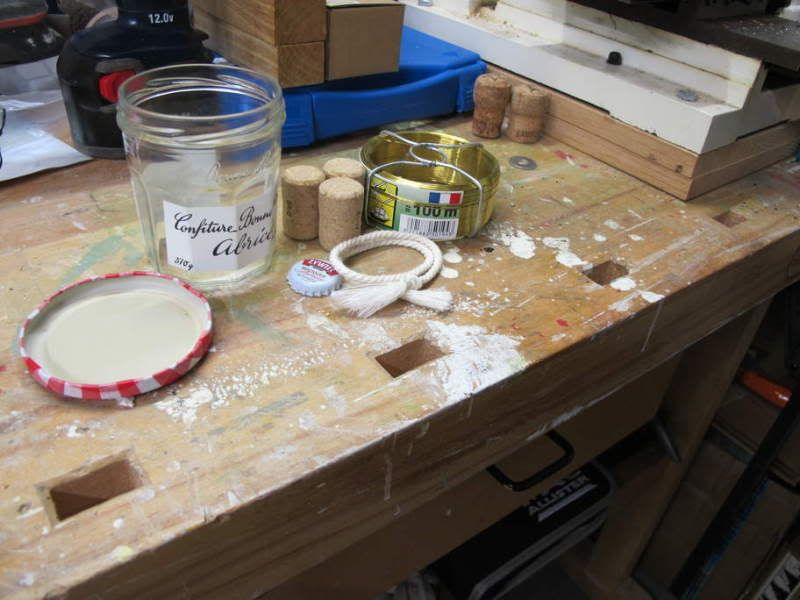
I cut a slice from each cork.
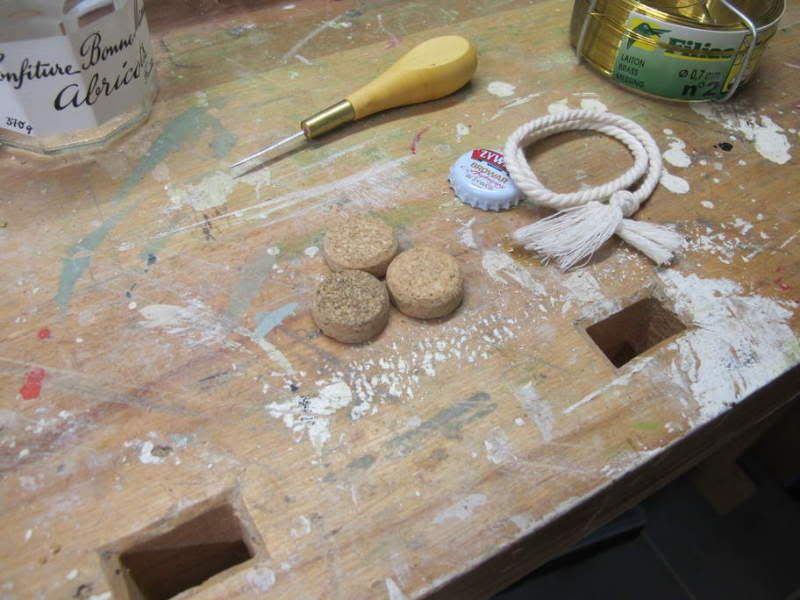
Then used the awl to put a hole in each.

Then used a bit of the brass wire to stitch them together.
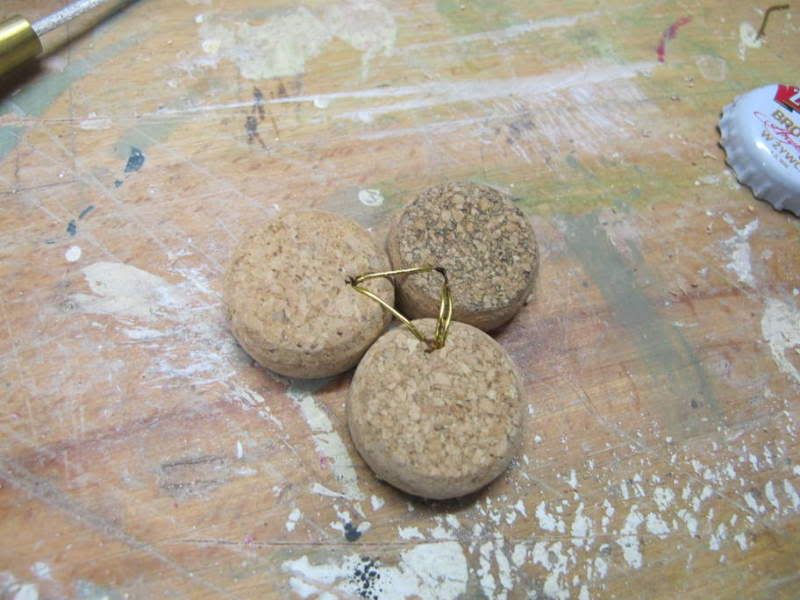
Next, I used the awl to cut a slot in one of the cork slices.
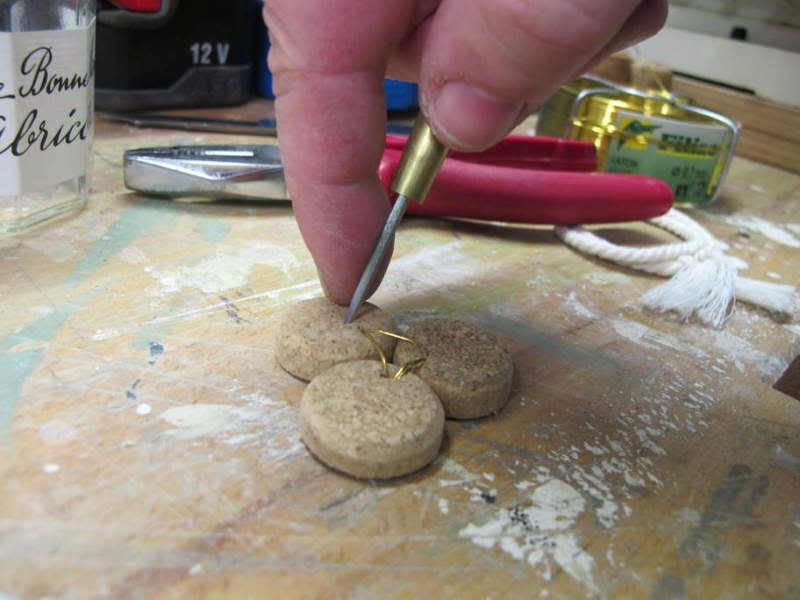
Then I used the douk-douk to make two cuts in the rim of the crown cap and then used the pliers to fold down the rum leaving a little tab sticking up.

The tab fits into the slot cut into the cork.
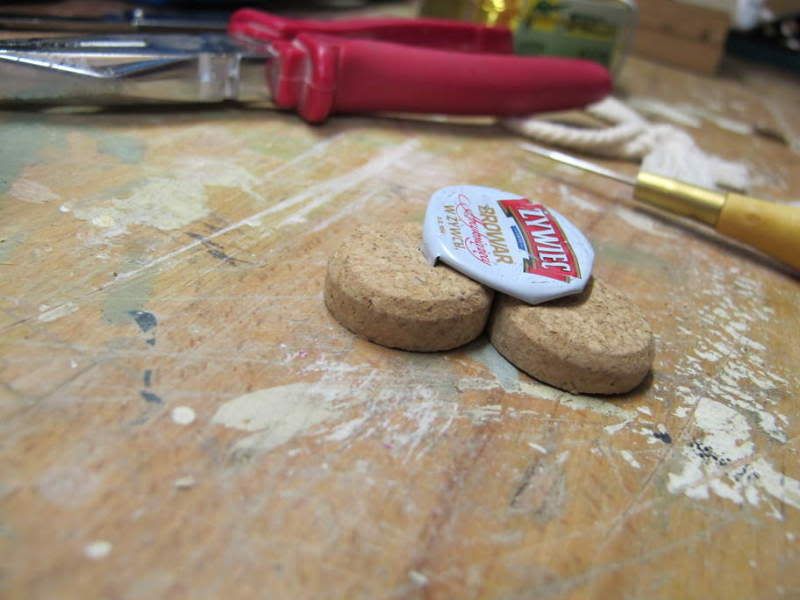
Next, I flipped over the cork floater and used the awl to pierce a small hole in the centre of the crown cap.
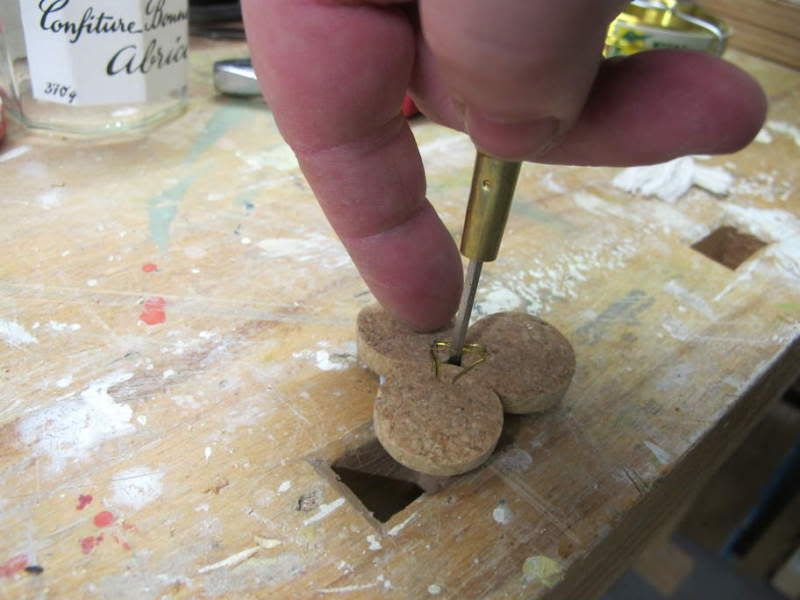
Then I removed the crown cap and used the douk-douk to enlarge the hole.
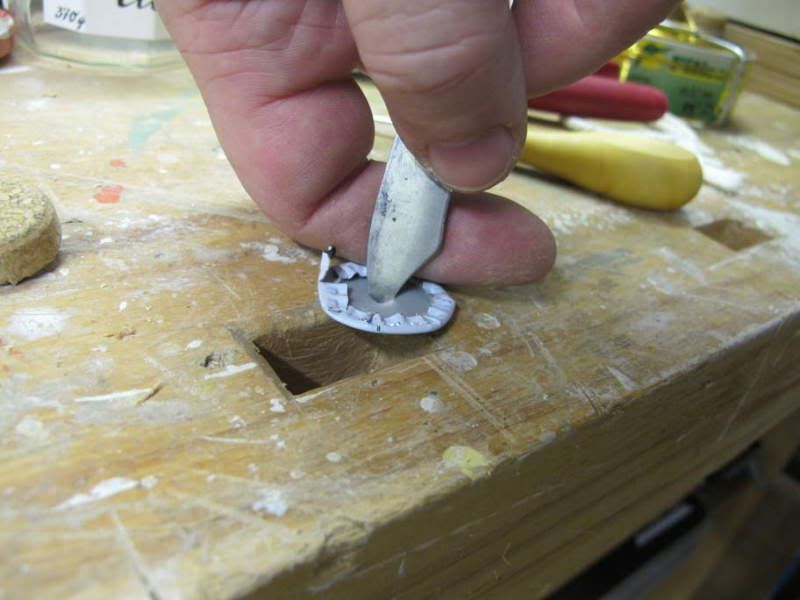
The hole is too small to be able to easily push the very soft cotton string through it, so I wrapped a bit of the brass wire tightly around the end of the string.
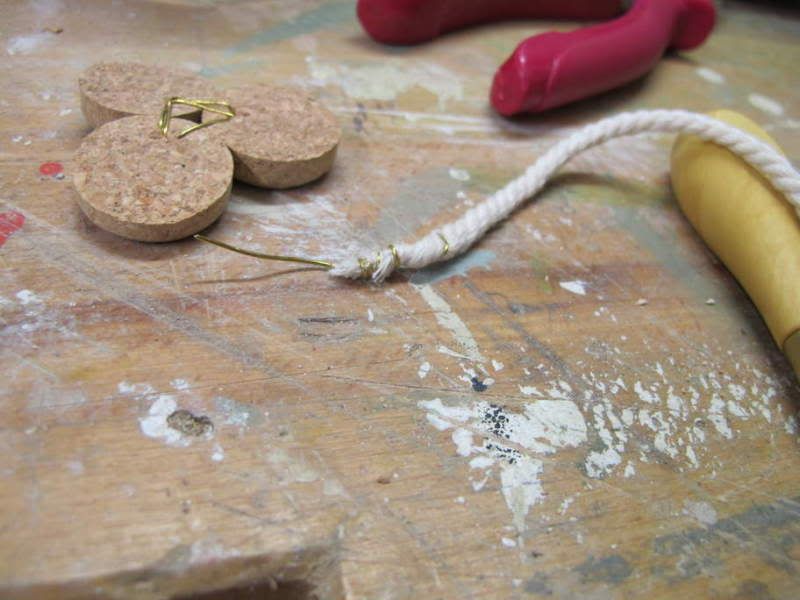
This goes through the gap where the three corks meet, then through the hole in the crown cap.
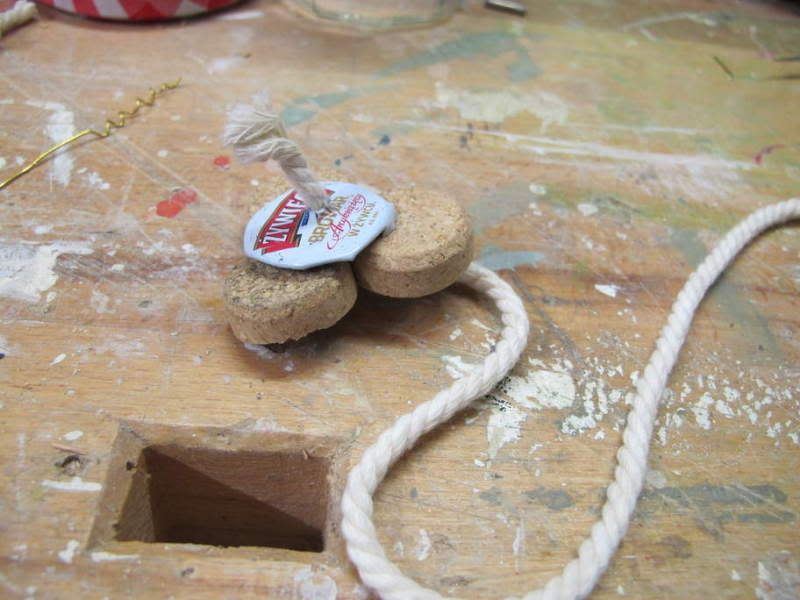
Then I filled the jam jar to around 1/3 full with cooking oil, and trimmed the string to not have too much coiled around in the bottom of the jar.
This was a commercial blend of rapeseed, sunflower and grapeseed oil from the supermarket, but any vegetable oil should work. These kind of lamps are often used in Greece, with olive oil as the fuel.

A side view to show the level of the oil and the string. I waited for five minutes to allow the oil to be drawn all the way up the wick
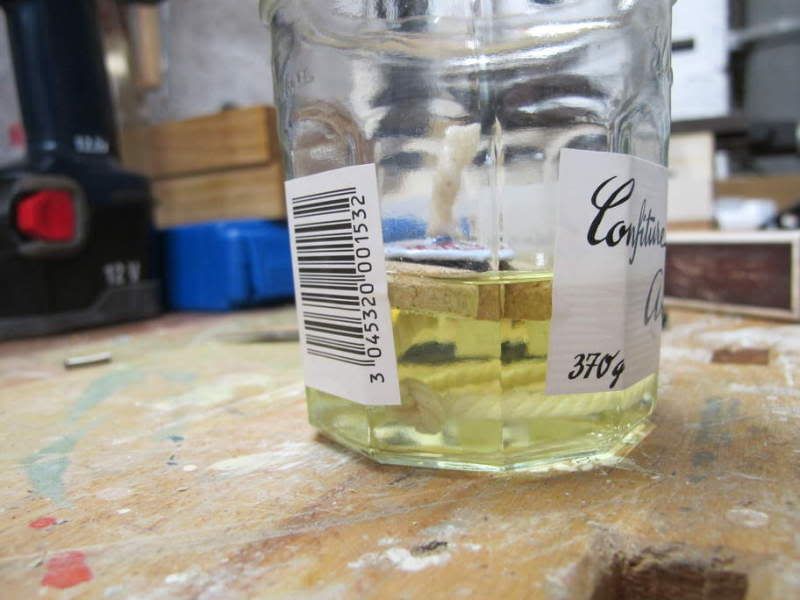
Lighting can be a bit tricky... it's not easy to reach down into the jar with a burning match to get the wick burning.

Now a few pictures with the lights out, in my basement workshop with no windows, to show how much light this gives.
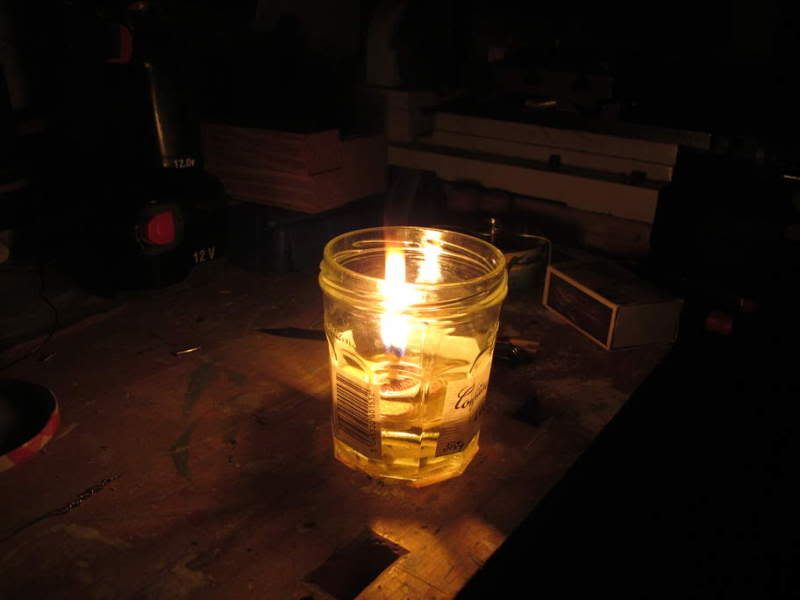


I started out with the following materials.
- Three corks from Jenlain beer bottles (because I didn't have a big enough piece of cork for this).
- A crown cap from a bottle of Żywieć.
- Some 0.7mm diameter brass wire.
- A piece of cable-laid cotton string.
And the following tools.
- A pair of pliers.
- A douk-douk.
- An awl.

I cut a slice from each cork.

Then used the awl to put a hole in each.

Then used a bit of the brass wire to stitch them together.

Next, I used the awl to cut a slot in one of the cork slices.

Then I used the douk-douk to make two cuts in the rim of the crown cap and then used the pliers to fold down the rum leaving a little tab sticking up.

The tab fits into the slot cut into the cork.

Next, I flipped over the cork floater and used the awl to pierce a small hole in the centre of the crown cap.

Then I removed the crown cap and used the douk-douk to enlarge the hole.

The hole is too small to be able to easily push the very soft cotton string through it, so I wrapped a bit of the brass wire tightly around the end of the string.

This goes through the gap where the three corks meet, then through the hole in the crown cap.

Then I filled the jam jar to around 1/3 full with cooking oil, and trimmed the string to not have too much coiled around in the bottom of the jar.
This was a commercial blend of rapeseed, sunflower and grapeseed oil from the supermarket, but any vegetable oil should work. These kind of lamps are often used in Greece, with olive oil as the fuel.

A side view to show the level of the oil and the string. I waited for five minutes to allow the oil to be drawn all the way up the wick

Lighting can be a bit tricky... it's not easy to reach down into the jar with a burning match to get the wick burning.

Now a few pictures with the lights out, in my basement workshop with no windows, to show how much light this gives.



Last edited:
Well there you go, theres no arguing with that. You learn something everyday. I need to get my facts straight before i open my mouth. I thought paraffin was far more volatile.
Great job by the way
Great job by the way
thanks for the replies and that tutorial is ace, i already have two hurricane lanterns and it was their basic function that inspired my idea ( i cant see how much safer they can be as it appears if they are knocked over the paraffin would flow out. I was thinking of having the wick out of the lid and the jar sealed rather than in the tutorial more like one of those garden torch type set ups... i love using a candle in a jam jar i was just mulling over the practicality of using a paraffin set up too whilst washing out one of the baby juice jars as its much less bulkier than the hurricane lantern. Ill knock one up and give it a try.
Having no cover means that spilling the fuel is a problem if you knock over the lantern, but on the other hand, this jam jar version keeps the wick well down below the edge of the jar and out of the wind. Whereas the garden torches use a much more volatile petroleum oil and the flames on them get quite fierce in a breeze. If you don't keep the wick short, you can easily find yourself with a foot long horizontal flame reaching for the azaelia. 
Another advantage is that cooking oil is not that easy to set alight... If you knock over one of these, the spilt oil is not going to give you a great big lake of flame. The burning wick might set fire to flammable synthetic textiles, but the cold oil will just make a nasty mess and not much else.
Another advantage is that cooking oil is not that easy to set alight... If you knock over one of these, the spilt oil is not going to give you a great big lake of flame. The burning wick might set fire to flammable synthetic textiles, but the cold oil will just make a nasty mess and not much else.
Well there you go, theres no arguing with that. You learn something everyday. I need to get my facts straight before i open my mouth. I thought paraffin was far more volatile.
Great job by the way
You can dip a match into paraffin to put it out.
It only really burns in vapour form or if soaked into a decent wicking substance like cloth or paper.
It's only a little more flamable than candle wax at normal temperatures.
Paraffin (kerosene) flashes at about 60c so unless you put it on top of a stove it is pretty safe and requires a wick. As wayland says you can drop a match into it and nothing will happen.
Sent from my GT-P3110 using Tapatalk 2
Sent from my GT-P3110 using Tapatalk 2
Similar threads
- Replies
- 3
- Views
- 632
- Replies
- 107
- Views
- 10K
- Replies
- 7
- Views
- 2K
